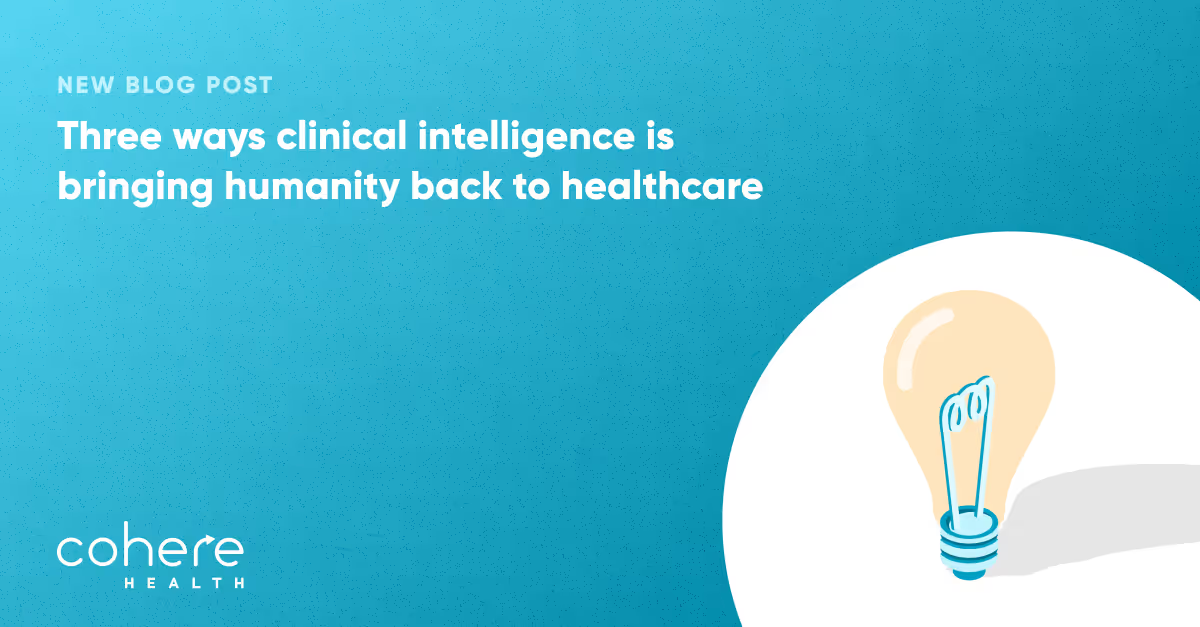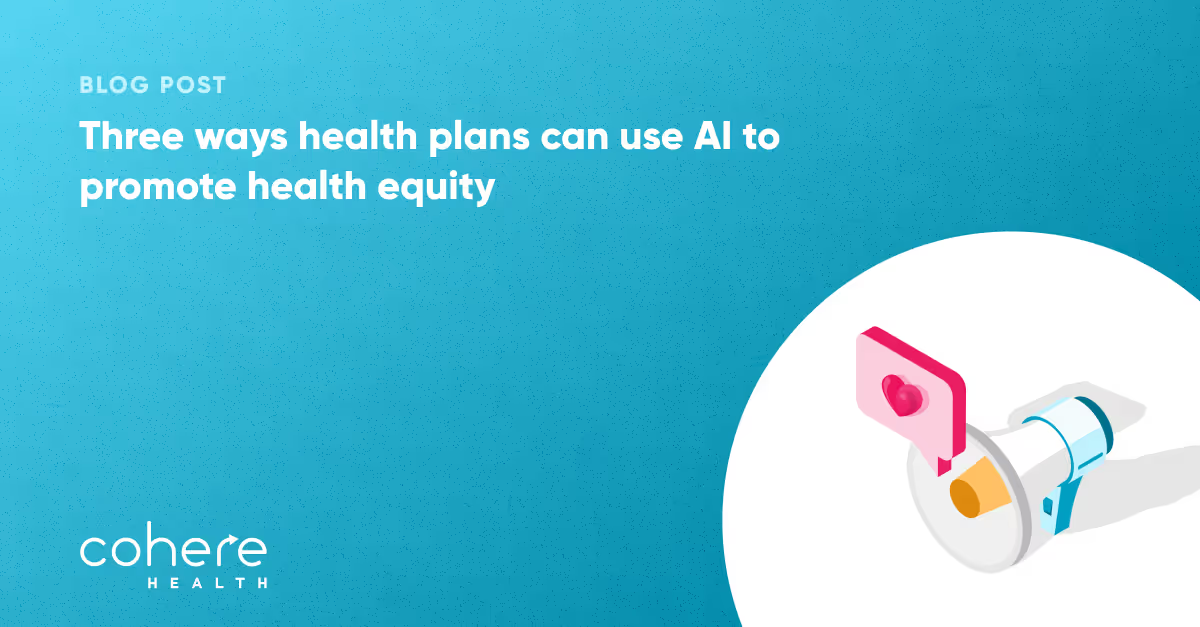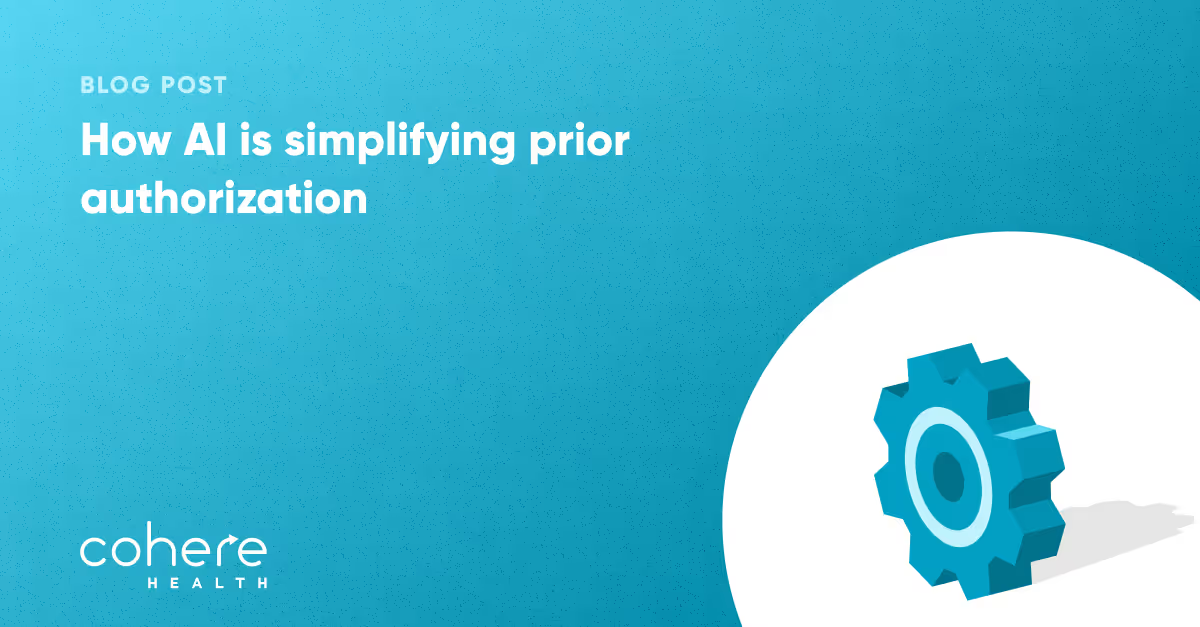Three ways clinical intelligence is bringing humanity back to healthcare
Published:
April 17, 2024

Physicians are under a lot of pressure to apply emerging technologies to reduce the burden of prior authorization and improve the speed with which patients can access quality care. However, physicians have yet to access these capabilities in large numbers.
Health plans can implement intelligent prior authorization to help address the physician burden associated with prior authorization. The application of evidence-based clinical intelligence makes physicians’ administrative loads lighter, while also improving patient outcomes. This article explores how this technology (surprisingly) can make healthcare more human.
The true cost of physician burnout: $4.6B
More than half of US physicians report at least one symptom of burnout—nearly twice the rate of the general working population. This burnout costs an estimated $4.6 billion annually. Research organizations are urging health systems and payers to consider how clinical support staff can minimize the time physicians dedicate to administrative tasks. Less administrative tasks frees physicians up to spend more time on clinical work, which has proven to be a key predictor of professional well-being.
Health plans should consider implementing intelligent prior authorization to ease this administrative burden.
Here are two key reasons why it’s the perfect time to introduce AI-powered technologies:
- Regulatory requirements: CMS and state legislatures have passed regulations to digitize prior authorization data exchange and tighten turnaround times.
- Physician receptiveness: Sentiments toward digital tool adoption are improving as technology advances.
According to a study by the American Medical Association, the percentage of physicians who feel digital health tools are an advantage for patient care grew from 85% in 2016 to 93% in 2022, and increases were measured across all ages and specialties. Though attitudes are favorable, adoption is currently still low, perhaps due to the perceived or actual implementation lift. Two in five physicians plan to adopt augmented intelligence in the next year, while nearly one in five physicians currently use augmented intelligence in their practices.
Innovative health plans and payers that implement intelligent prior authorization will prove to their physician partners that ameliorating the undue burden associated with prior authorization is a priority. This will go a long way in improving the collaboration between plans and their provider networks.
How clinical intelligence is easing physician burden in prior authorization
Intelligent prior authorization uses a combination of AI-powered analysis of large data sets, predictive analytics based on clinical and demographic details, and evidence-based guidelines to add clinical context to prior authorization transactions and improve outcomes. This clinical intelligence also improves efficiencies within the prior authorization process, allowing healthcare providers to focus more of their attention where it can do the most good, working with their patients.
The result? Healthcare that’s more human.
1. Intelligent review: Just because physicians are the clinical experts doesn’t mean AI can’t help
There’s a lot of buzz around how health plans can leverage rules-based decisioning to instantly adjudicate decisions using Prior Authorization Requirements, Documentation and Decision (PARDD) APIs. This ability to more frequently get to an instant “yes” saves physicians and their staffs substantial administrative time and effort, and helps get patients faster access to appropriate care.
However, AI and machine learning can also impact prior authorization requests that require manual review by health plan clinician reviewers. Through optical character recognition (OCR) technology and large language models, intelligent prior authorization scans pages of documentation for specific clinical evidence required for authorization approval to save reviewers time.
When clinical reviewers go to the platform to review a case for medical necessity, they are immediately guided to the most relevant sections of the patient’s clinical record without having to read or even skim the entire packet first. Models get smarter and smarter with the ingestion of more data and clinician feedback, so reviewers can work at the tops of their licenses—improving administrative efficiencies for health plans and reserving only the most complex cases for manual physician review. This results in huge turnaround time savings, further speeding up patient access to care.

2. Nudges: Increase auto-approvals with a little AI-powered assistance
Another way that clinical intelligence can help accelerate the prior authorization process is by improving the percentage of authorization requests that qualify for automated decisioning before the request is submitted. Intelligent prior authorization leverages machine learning to send notifications to providers of plan-specific policy guidelines while they are sending a request.
For example, a provider submitting a request for a pain injection might not know the clinical evidence the health plan requires for automatic approval. Without policy-required evidence, the request might be routed for a peer-to-peer review or even denied. However, by deploying a nudge, or a notification, to the provider while they select the service, the provider can easily attach the missing advanced imaging and secure an automated approval for the service, delivered instantly.
3. Episodic authorizations: Eliminating administrative redundancy helps providers and patients
By adding AI-powered clinical intelligence to the process, prior authorization transactions become a moment of influence for health plans to suggest and promote high-value care pathways for their patients. Using clinical evidence bolstered by patient-specific and outcome data for related populations, health plans can collaborate with providers to improve care quality, beyond the short-term impact of simply saying yes or no to an authorization request.
Health plans can use episodic authorizations to approve a bundle of related service requests at once.
Episodic authorizations can also be used to shift the diagnosis and treatment of conditions like osteoporosis upstream, automatically adding prior authorization requests for a bone mineral density (BMD) test for high-risk patients who experience a fracture. By implementing episodic authorizations, health plans can educate and encourage physicians to diagnose osteoporosis. With this knowledge, physicians can plan interventions to treat it and help decrease the patient’s chance of developing a secondary fracture.
Providers, health plans, and patients all benefit. Providers already aware of best practices are saved the additional labor of sending multiple authorization requests and move patients along care pathways more efficiently. Health plans benefit from long-term cost savings as more patients are aligned to high-value, evidence-based care pathways.
Available For Download
Stay ahead with expert insights on transforming utilization management and payment integrity—delivered straight to your inbox.



